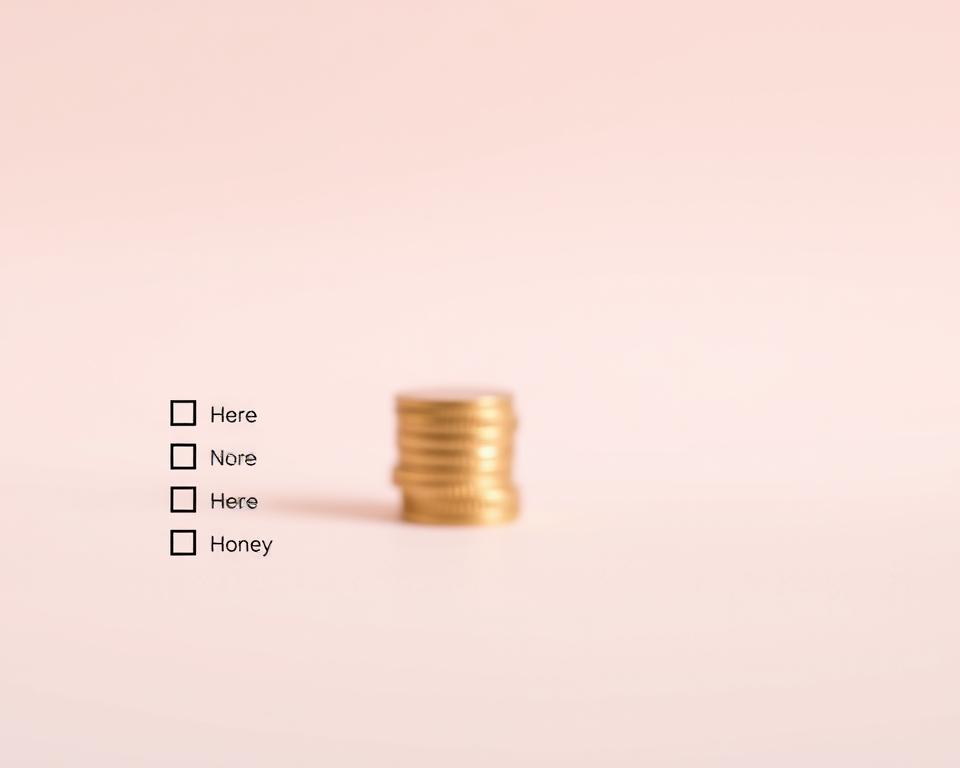Anúncios
personal budgeting tips can feel overwhelming, but now is a smart time to get organized and take control of your money.
A practical budget gives you less stress and more freedom by showing where your money goes each month. You’ll get a clear, step-by-step plan to track expenses, trim waste, and align spending with your goals.
This guide explains core methods like a zero-based approach and 50/30/20, how to handle variable income, and ways to build an emergency cushion. Expect it to take a few months to feel confident; small wins and automation matter most.
For couples and families, communication helps you set shared priorities and use joint or separate accounts wisely. Adapt these ideas to your situation, treat examples as general information, and seek qualified guidance when needed.
Why budgeting now matters for your money and peace of mind
Taking a few steps to see your income and bills brings calm and practical choices. A clear budget lowers stress by giving visibility and control over daily decisions and long-term goals. It helps stop paycheck-to-paycheck cycles and makes saving easier.
Context and core benefits
Many Americans face rising living costs and irregular bills. A simple plan prepares you for things like back-to-school needs or car maintenance. You’ll learn how to track expenses and avoid surprises.
What this guide will do for you
This guide shows simple systems, practical tracking, and realistic ways to adjust as life changes. It will help you prioritize essentials first, then build savings, retirement contributions, and pay down debt as your capacity allows.
- Progress takes time: expect about 3–4 months to feel comfortable.
- Common pitfalls: underestimating expenses, skipping check-ins, and ignoring irregular costs—solutions come next.
- Couples should communicate; solo planners can use an accountability buddy or online community.
Make sure this content is educational. Adapt advice to your situation and consider professional help for complex choices. Next, you’ll map income and priorities before choosing a system.
Get clear on your income and priorities before you create a budget
Begin with a quick income audit so your budget reflects real take-home pay. Confirm each paycheck’s net amount and list variable sources like side gigs or tips after taxes and expenses.
Add back pre-tax deductions such as 401(k) or insurance during your review so you see full earnings and where money is allocated. For side work, subtract likely taxes and business costs to estimate true net income.
Set clear, time-bound goals
Write 1–3 specific, time-bound financial goals. Example: “Save $1,000 for car repairs in 5 months.” Jot a short why for each goal to stay motivated.
Separate needs from wants without guilt
Use a simple filter: needs keep you working and safe—rent, groceries, utilities, transportation, insurance, and minimum debt payments. Label gray areas (like organic groceries or delivery) so choices match your plan.
- Map fixed bills and typical variable categories to see where your money is going today.
- Open or label a separate savings account for goal buckets if that helps tracking.
- Choose one tracking way you’ll use—app, spreadsheet, or paper—and do a weekly 10–15 minute review.
Take one small step this week: cancel an unused subscription or set a $10 automatic transfer. That step starts progress and makes the whole process easier to follow.
Choose a budgeting method that fits your life
Pick a plan that matches how you earn and spend so you can stick with it. Different methods suit steady paychecks, side gigs, or seasonal work. Below are simple ways to create budget rules that work for your month.
Zero-based budget: give every dollar a job each month
The zero-based budget assigns every dollar before the month starts. Income minus expenses should equal zero, with a small buffer for surprises.
Pros: precise control and clear priority for savings or debt payment. Cons: needs weekly checks and some effort to track. Example: allocate pay to rent, food, transportation, sinking funds, and a small fun fund.
50/30/20 and other ratios: flexible guardrails
The 50/30/20 model directs 50% to necessities, 30% to wants, and 20% to savings or debt. Alternatives like 60/20/20 work if costs are higher in a given month.
Envelope and cash systems for better control
Use cash envelopes for categories that trigger overspending—dining out or groceries. Physically handing cash often slows impulse spending and keeps you honest.
Adjust for variable or seasonal income
Build a baseline month that funds essentials first. Then add categories as income arrives. Label sinking funds in a dedicated account for car maintenance or annual bills.
Make sure essentials—housing, food, utilities, transportation, insurance, and minimum payments—are funded before wants. If a method doesn’t stick after a few months, change it; fit beats perfection.
Build resilience with an emergency fund
Start building a small cash cushion so unexpected repairs and bills won’t blow up your month. A clear plan helps you stay calm and protect your regular spending.

Start small and automate
Begin with a $500 starter target. That amount handles many minor emergencies and prevents new debt. Automate a fixed transfer every payday so growth happens without thinking.
Scale to three–six months of expenses
After the starter milestone, increase the fund toward three to six months of essential costs. Keep the money in a separate, accessible savings account—possibly at a different bank—to lower temptation.
- Purpose: a cushion keeps small surprises from derailing your budget.
- Where: high-yield savings account that’s easy to access but not mixed with daily spending.
- Use rules: spend only on true emergencies and refill the fund immediately afterward.
Track progress every month and celebrate small wins. Revisit the target over time as your household changes. This is the best way to keep your money steady through shocks and give you reliable financial information when you need it.
Tame spending and monthly expenses the practical way
Small, deliberate changes to how you handle everyday bills can free up real money fast. Start by covering essentials so the rest of the month is less risky.
Cover essentials first
List housing, groceries, utilities, transportation, insurance, and minimum debt payments. Fund these first within your budget so essentials never get skipped.
Trim and overestimate where needed
Overestimate tricky categories like groceries and gas for the first few cycles. That buffer helps avoid surprises when actual spending spikes.
Add a small miscellaneous line to catch odd costs without raiding other categories.
Practical habits that cut waste
Try switching problem categories to cash for a month to reset habits. Use a 24-hour rule for non-urgent purchases and disable one-click buying to slow impulse spending.
- Shop recurring bills—cell, internet, insurance—to lower monthly costs.
- Schedule routine car maintenance and build a sinking fund so repairs don’t wreck your month.
- Track spending weekly and reconcile with your account so your numbers reflect reality.
Make sure due dates align with your pay schedule where possible. If essentials exceed income, prioritize needs and rethink the budget approach so you keep steady progress.
Smart debt repayment without derailing your budget
Tackling debt without stress means choosing a clear, realistic path that fits your month-to-month cash flow. Start by listing every balance, rate, and minimum so you can see where your money goes and pick a plan you’ll stick with.
Prioritize high-interest balances like credit cards
Pay attention to high-rate accounts first—credit cards and many personal loans cost the most over time. Reducing those balances lowers the total interest you pay and frees cash faster.
How the debt snowball builds momentum
The debt snowball targets the smallest balance first for quick wins. You keep paying minimums on other accounts while you throw extra at the smallest one.
When that balance is gone, roll the freed-up payment to the next debt. That momentum helps maintain motivation and steady progress.
Automate payments and align due dates with paychecks
Make automation your ally: schedule payments to protect your credit and avoid late fees. Move due dates near payday when possible so you pay on time without extra effort.
- Keep minimums current to protect your credit and avoid fees.
- If student loans are present, review repayment options and consider income-driven plans if they fit.
- Keep a small emergency buffer so surprises don’t force new borrowing.
Make sure your approach fits your life—choose avalanche for math-first savings or snowball for motivation. Revisit your budget monthly and redirect freed-up dollars to the next target so progress keeps building.
personal budgeting tips for real life
Making simple habits around money can turn planning into steady progress each month. Start by creating a zero-based budget before the month begins so every dollar has a job and bills and monthly expenses are covered.
Plan ahead and tweak for events
Map next month’s categories now: utilities, rent, retirement contributions, and a miscellaneous line for odd costs. Add calendar reminders for one-off events—birthdays, school fees, car tabs—so you plug them into the next cycle.
Daily tracking and weekly check-ins
Do a 2-minute daily spending log and a 10-minute weekly review to catch drift. This light routine keeps your plan aligned with actual spending and helps you reach financial goals without a lot of time.
Practical spending controls
Use cash envelopes in trouble categories like dining out or fun money. When the cash is gone, you stop until next month. Reduce reliance on credit cards so you’re spending what you have and avoid surprise bills.
Teamwork and contentment
If you budget with a partner, hold a short monthly meeting to align priorities and upcoming things. Practice contentment: unfollow sellers that trigger impulse buys and use a 24-hour pause on non-essentials.
- Plan categories before the month starts.
- 2-minute daily logs, 10-minute weekly resets.
- Cash in trouble spots; fewer credit cards for cleaner tracking.
- Capture small wins—canceled subscriptions or extra money sold—to fund top goals.
Expect a learning curve: give it 3–4 months. Consistency builds control and is the best way to reach financial goals.
Conclusion
Close the month by checking income, tracking spending, and making one small adjustment. Do a quick review so you see where expenses landed and which categories need attention.
Follow a simple flow: clarify income, list needs, pick a budget method, and create a monthly plan you can sustain. Keep a starter emergency fund and grow it so surprise bills don’t force new debt.
Prioritize high-interest debt while keeping payments current to protect your credit. Adjust categories for changing utilities, groceries, car costs, and annual bills as income shifts.
Review progress monthly and quarterly. Even one automation—an automatic transfer or moved due date—saves time and builds momentum toward retirement and other goals.
Adapt these ideas to your situation and consult an accountant, financial advisor, or lawyer for tax or legal questions.



